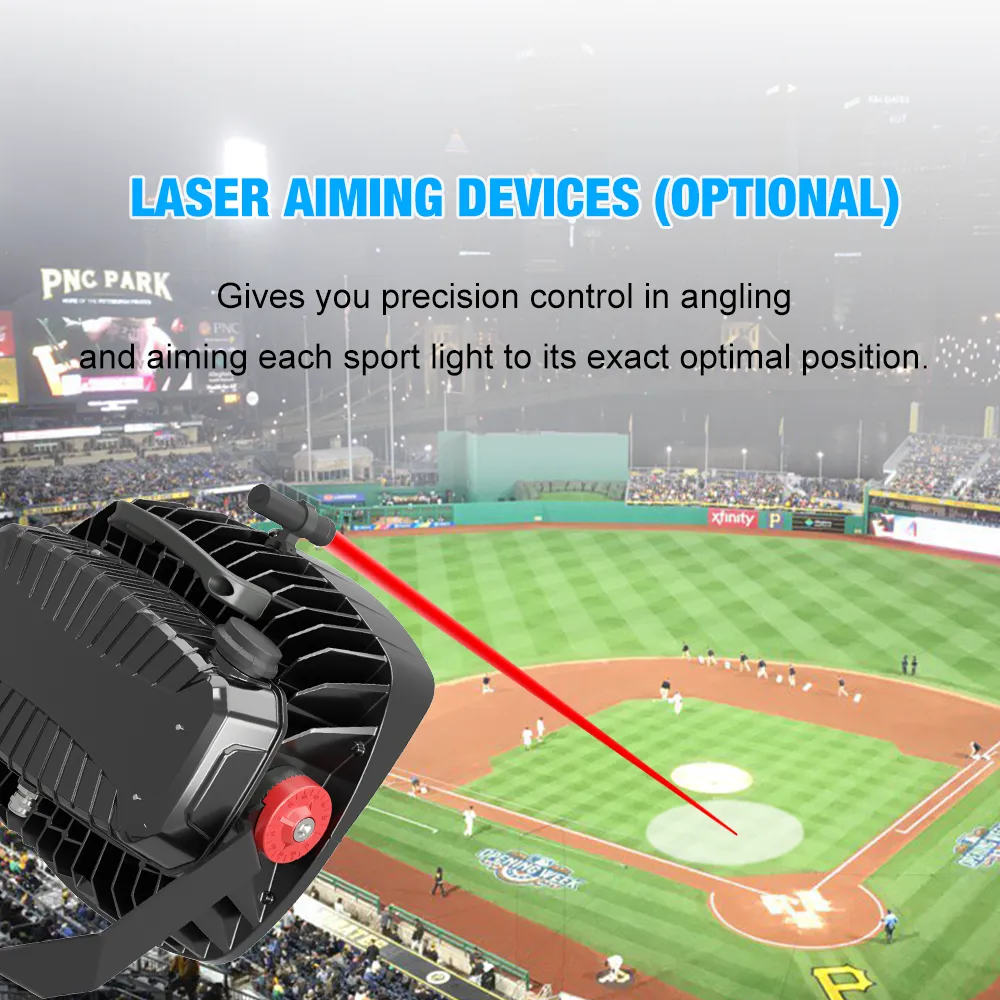What Are the Energy Savings with LED Stadium Light?
2025
Understanding the Revolutionary Impact of LED Stadium Lighting
Stadium lighting has undergone a dramatic transformation in recent years, with LED stadium light technology emerging as a game-changing solution for sports venues worldwide. The shift from traditional metal halide fixtures to LED lighting systems represents more than just a change in technology – it's a complete reimagining of how we illuminate large-scale sporting venues while prioritizing energy efficiency.
Modern LED stadium light installations are revolutionizing the way facility managers approach their lighting solutions. These advanced systems deliver exceptional illumination quality while consuming significantly less power than conventional lighting methods. The impact extends beyond mere energy consumption, affecting everything from operational costs to environmental sustainability.
Core Benefits of LED Stadium Lighting Systems
Dramatic Reduction in Energy Consumption
When comparing LED stadium light systems to traditional metal halide fixtures, the energy savings are remarkable. LED technology typically consumes 50-75% less electricity while providing the same or better illumination levels. For instance, a traditional 1000-watt metal halide fixture can often be replaced by a 300-400 watt LED system, maintaining or even improving light output.
This substantial reduction in power consumption translates directly to lower utility bills. Large stadiums that previously required hundreds of kilowatts of power can now operate efficiently with just a fraction of their former energy requirements. The savings become even more significant when considering the extended operating hours during evening events and training sessions.
Enhanced Lifespan and Maintenance Benefits
LED stadium light fixtures typically last 50,000 to 100,000 hours, compared to just 15,000-20,000 hours for metal halide systems. This extended lifespan means fewer replacement cycles and reduced maintenance costs. The durability of LED systems also makes them more reliable in various weather conditions, minimizing the need for emergency repairs or replacements.
The reduced maintenance frequency not only saves money but also minimizes disruption to stadium operations. Facility managers can focus on other aspects of venue management instead of constantly addressing lighting issues. This improved reliability is particularly valuable during major sporting events when lighting failures could have serious consequences.
Advanced Features Driving Additional Savings
Smart Control Systems Integration
Modern LED stadium light installations often include sophisticated control systems that further enhance energy efficiency. These smart controls allow for instant on/off capability, dimming functions, and programmable scheduling. Unlike traditional lighting systems that require warm-up periods, LEDs can be switched on and off instantly, eliminating the need to keep lights running between events.
The ability to dim lights when full brightness isn't needed, such as during maintenance or practice sessions, provides additional energy savings. Some systems even incorporate occupancy sensors and daylight harvesting capabilities, automatically adjusting light levels based on natural light availability and venue usage patterns.
Zoning and Customization Options
LED systems enable precise control over different stadium zones, allowing operators to illuminate only the areas in use. This targeted approach prevents unnecessary energy consumption in unused sections of the venue. The flexibility to create custom lighting scenarios for different events or activities ensures optimal energy usage while maintaining appropriate lighting levels.
Advanced zoning capabilities also support multiple use cases within the same venue. Whether hosting a professional sports event, concert, or community gathering, the lighting can be tailored to meet specific requirements while maximizing energy efficiency.

Environmental Impact and Sustainability Benefits
Carbon Footprint Reduction
The energy efficiency of LED stadium light systems directly translates to reduced carbon emissions. By consuming less electricity, these installations help venues decrease their environmental impact significantly. A typical large stadium converting to LED lighting can reduce its carbon footprint by hundreds of tons annually, equivalent to taking numerous cars off the road.
This environmental benefit extends beyond energy consumption. LED fixtures contain no hazardous materials like mercury, making them safer to handle and dispose of compared to traditional lighting options. The longer lifespan also means fewer replacements and less waste going to landfills.
Green Building Certification Support
Installing LED stadium light systems can help venues achieve or maintain various green building certifications. These energy-efficient solutions contribute significantly to LEED points and other sustainability ratings, which are increasingly important for modern sports facilities. The documented energy savings and reduced environmental impact make LED lighting a crucial component of any stadium's sustainability strategy.
Many venues leverage their green initiatives for marketing purposes, attracting environmentally conscious event organizers and sponsors. The demonstrable commitment to sustainability through LED lighting adoption can create additional revenue opportunities while reducing operational costs.
Financial Implications and Return on Investment
Initial Investment Considerations
While LED stadium light systems typically require a higher upfront investment compared to traditional lighting, the long-term financial benefits far outweigh the initial costs. The combination of reduced energy consumption, lower maintenance requirements, and extended lifespan creates a compelling business case for LED adoption.
Many facilities can expect to recover their investment within 3-5 years through energy savings alone. When factoring in reduced maintenance costs and potential utility rebates or incentives, the payback period can be even shorter. This rapid return on investment makes LED lighting an attractive option for both new construction and retrofit projects.
Operational Cost Analysis
The ongoing operational savings from LED stadium light installations create significant positive cash flow for venues. Beyond the direct energy savings, facilities benefit from reduced labor costs for maintenance, lower replacement part expenses, and decreased cooling costs due to LED's lower heat output. These combined savings can amount to hundreds of thousands of dollars annually for larger venues.
The predictable performance and longevity of LED systems also help facilities better manage their maintenance budgets and schedule upgrades more effectively. This improved planning capability contributes to better financial management and resource allocation.
Frequently Asked Questions
How much can a stadium save by switching to LED lighting?
Stadiums typically save between 50-75% on lighting-related energy costs after converting to LED stadium light systems. The exact savings depend on factors such as facility size, usage patterns, and local utility rates. Many venues report annual energy cost reductions of tens or hundreds of thousands of dollars.
What is the typical payback period for LED stadium lighting?
Most facilities achieve full return on investment within 3-5 years through energy savings alone. When including maintenance savings and available incentives, the payback period can be as short as 2-3 years. The exact timeline varies based on usage hours, electricity costs, and the scope of the installation.
Are LED stadium lights more reliable than traditional lighting?
Yes, LED stadium lights are significantly more reliable than traditional lighting systems. They have a much longer lifespan (50,000-100,000 hours compared to 15,000-20,000 hours for metal halide), require less maintenance, and perform more consistently across various weather conditions. Their instant-on capability also eliminates warm-up periods and reduces the risk of interruptions during events.

 EN
EN
 AR
AR
 BG
BG
 HR
HR
 CS
CS
 DA
DA
 NL
NL
 FI
FI
 FR
FR
 DE
DE
 EL
EL
 HI
HI
 IT
IT
 JA
JA
 KO
KO
 NO
NO
 PL
PL
 PT
PT
 RO
RO
 RU
RU
 ES
ES
 SV
SV
 CA
CA
 TL
TL
 IW
IW
 ID
ID
 LV
LV
 LT
LT
 SK
SK
 SL
SL
 UK
UK
 ET
ET
 GL
GL
 HU
HU
 MT
MT
 TH
TH
 TR
TR
 FA
FA
 MS
MS
 GA
GA




